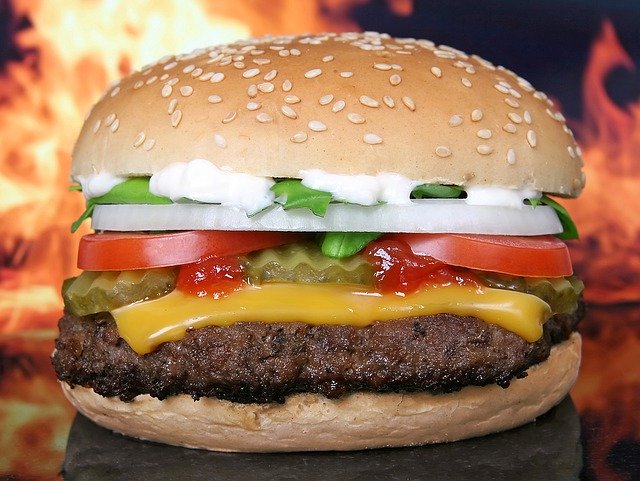When Divorce Meets Bitcoin: A New Asset Concealment Strategy
Divorce and the division of assets
Divorce cases are not mere separation procedure of two individuals by dissolving their marriage. Since time immemorial, the idea of divorce is perceived as an irrevocable social penalty pronounced upon women. The concept of alimony and division of property was devised to support traditional homemakers monetarily. Though a necessary step towards the upliftment of homemakers, this regulation has been exploited in innumerable cases to strip the man of all his money and property rights.
With the rise of egalitarianism, men too, are now allowed to apply for a share of his rich wife’s money as a penalization for a breach of marriage vows. For instance, in the year 1999, a Californian court ordered a woman to hand over her lottery jackpot of more than one million dollars to her divorced husband for keeping it a secret to him.
The idea of Bitcoins and its implementation
One may observe how Divorce cases more than often lead to a money tug of war between the two parties. Nobody wants to lose out on a chance of acquiring alimony, nor does anyone wish to wilfully part with his/ her money. This is where the question of surreptitious stacking of currency comes to the forefront. Beschrieben wird Bitcoin Circuit guides you regarding this in the best possible way.

With the passing of time, mankind has grown wiser, and it has become increasingly difficult to keep the possession of assets hushed-up in cases of Divorce and legal separation. Divorce lawyers and counsellors leave no stone unturned to help their clients in taking over a considerable chunk of a spouse’s wealth. Private bank accounts and shares may be traced within seconds, making an attempt to protect assets, unachievable.
The only remaining solution to the issue of asset protection is rendering the wealth invisible. As sorcerous as it sounds, the means to its attainment isextremely normal in today’s world. The issue of protecting assets in divorce cases can be resolved through the conversion of all properties and assets into cryptocurrencies.
Cryptocurrencies such as the Bitcoin is a virtual alternative to physical materialistic possessions. It mainly involves digitisation of one’s assets. The possession of Bitcoins removes a host of intermediaries as well as The central bank involved in a transaction between a buyer and a seller. The one attribute of Bitcoin that makes it exceptional is that it may be possessed under a pseudonym or a false name, making its possession an extremely discreet affair. A Bitcoin wallet address may only be tracked down by the owner’s identity. This means that no other entity, not even the respective government has any say in the matters involving cryptocurrencies because it’s not a part of a country’s economy nor is it recognised as a legal tender.
Stacking away of wealth in the form of Bitcoin is seemingly a viable asset protection strategy in divorce cases for there is no physical evidence of its existence. All the transaction history pertaining to the use of Bitcoins are maintained in ledgers in the cloud. This strategy may be easily implemented through the transition of all tangible assets into their amount in the digital Bitcoin. This will enable a spouse’s potential success in concealing his/her assets during the procedure of Divorce or legal intervention and counselling for that matter.
Using Bitcoins as a medium for protecting one’s assets has its own share of advantages and disadvantages.
Advantages:
- The tracking of one’s possession of Bitcoins and other cryptocurrencies is an extensively complicated, expensive and time-consuming procedure involving a team of forensic analysts and tech-savvy lawyers, to name a few. This process as one may very easily decipher is not for the middle-class divorce seeking a spouse. The idea of tracing a spouse’s probable wealth in Bitcoins needs to be heavily backed up with certainty for its execution requires a lot of funds that should not out make the money acquired in the divorce case.

- One of the greatest advantages of possessing Bitcoins in such cases is the fact that it’s a new age strategy which not many people are able to handle or outsmart. It is very difficult to find lawyers and officials who are well versed in technology, enough to track a Bitcoin holder.
- Bitcoins are immensely easy to liquidate, and its liquidation does not require much effort. It also avails an easy transaction that is not recorded anywhere except for the cloud.
- The anonymity of the Bitcoin account is another advantage of owning them. A spouse and his/her lawyer will find it difficult to track an address that does not lead, in any way to the spouse seeking divorce. Clueless search for such cryptocurrencies is often fruitless; hence, not many may get into the quest for it. Apart from this, it is not easy to realise a spouse’s potential access to Bitcoins until he or she makes transactions, expensive enough to create doubts. One may escape such doubts through discretion in their spending habits.
Disadvantages
- Hiding assets in cases of divorce and legal separation is a punishable offence, and the offenders are penalised for it without fail. If a spouse is caught trying to prevent equitable distribution of assets through unfair means, such as the hidden possession of Bitcoins, he/she will have to face the contempt of the court and will eventually lose all their wealth to his/her spouse, which is definitely worse than the prospect of losing half the amount to the opposition party involved in the divorce.
- With the advancement in technology, forensic analysts have come up with ways more than one to track cryptocurrencies that were next to impossible when Bitcoins first become widely bought and sold. The tracing of Bitcoins, though difficult, isn’t entirely impossible. If the lawyers and analysts are able to acquire proper evidence regarding a spouse’s possession of Bitcoin, then all the copper-bottomed assets such as house and vehicles and money at the bank go to the other spouse by default as a benefit of the doubt.

Is the pay worth the risk?
With regard to all the aforementioned pros and cons, we come to the conclusion that cryptocurrencies such as the Bitcoin are a possible asset protection scheme in warlike Divorce cases. Such cases are mainly seen in families who own a lot of assets beyond measure. It is a scheme that comes with a high level of guarantee of success for, the lawyers and officials processing such cases are not well aware of how to deal digital money as such strategies do not come under the institutional course of legal procedures that agents are trained for.
Despite the allure of assured returns, one must always keep in mind that secrecy in matters that prohibit equal distribution of assets and money in the dissolution of marriages is unlawful. The implementation of strategies involving hidden Bitcoins is an enterprise involving high risks, but it undoubtedly helps to secure an immense amount of wealth that is practically impossible through any physical means such as Swiss bank accounts or other assets. None of the other asset protection strategies come close to the level of discretion and anonymity of Bitcoins, an attribute that becomes highly useful in cases like asset distribution involved in Divorces.







































